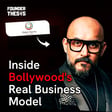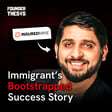
SaaS, Fintech, Consumer: Stellaris Ventures’ Investment Thesis with Rahul Chowdhri
How does venture capitalist Rahul Chowdhri build breakout Indian startups with discipline in a funding winter? In this Founder Thesis episode, the Stellaris Venture Partners co-founder unpacks his seed-to-IPO playbook across SaaS, AI, and consumer brands—and why India’s public markets are the ultimate exit test.
From an operator-turned-investor with 17+ years in venture, Rahul goes deep on founder selection (“ambition + reason”), the seed metrics that actually matter, and Stellaris’ focus on staying early-stage to compound outcomes. We discuss IPOs vs M&A in India (and why listing is the best outcome), how LP interest in India has surged, and how to pitch a fund when capital is selective. You’ll hear real talk on market cycles, AI disruption, and designing for public-market scrutiny from Day 1—making this episode a timely guide for Indian startup founders navigating 2025’s fundraising climate.
• How Rahul Chowdhri and Stellaris Venture Partners pick winners in SaaS, AI, and consumer
• Why IPO exits beat M&A in India—and how to build for them early
• The “ambition + reason” founder filter and the signals that matter at seed
• Surviving the funding winter with MIS discipline, unit economics, and repeatable GTM
• What global LPs want now—and why interest in India is up 10×
• Playbooks across AI/SaaS, consumer brand building, and designing for public markets
Subscribe to the Founder Thesis Podcast
Follow Akshay Datt (host) on LinkedIn for exclusive content
Visit founderthesis.com for more founder stories
00:00 – Rahul Chowdhri’s VC Journey
04:30 – Why Stellaris Stays Early-Stage
09:15 – Founder Filters: Ambition + Reason
14:40 – Seed Metrics That Matter
21:10 – IPO Exits vs M&A in India
28:05 – What LPs Want in 2025
35:20 – AI, SaaS and Consumer Bets
42:45 – How to Pitch Stellaris
#RahulChowdhri #StellarisVenturePartners #FounderThesis #IndiaVC #VentureCapitalIndia #FundingWinter #IPOExits #AIFReforms #SaaSIndia #AIStartups #ConsumerBrands #LPs #SeedToIPO #StartupFundraising #IndianStartups #VCPlaybook #PublicMarketsIndia #Mamaearth #Whatfix #EarlyStageVC



















